Campanulastrum americanum, commonly known as the American Bellflower, is a striking flowering plant that thrives in shaded environments, making it an excellent choice for gardeners looking for shade annuals. It produces nodding, bell-shaped flowers in shades of pale blue and lavender, and it blooms prolifically from late spring to early summer. This plant is native to North America and can be found growing naturally in woodlands and forest edges, where it thrives in partial to full shade.
Whether you are a novice gardener or an experienced horticulturist, Campanulastrum americanum offers a beautiful and low-maintenance option for adding color and texture to your shaded garden spaces. In this comprehensive guide, we will cover all aspects of growing and caring for this flowering annual plant for shade, from the initial selection of seeds to tips for maintaining a healthy, blooming plant.
Introduction to Campanulastrum americanum
What is Campanulastrum americanum?
Campanulastrum americanum, also known as the American Bellflower, is a member of the Campanulaceae family. This genus includes other well-known bellflowers, but Campanulastrum is distinctive for its graceful, drooping blooms, which resemble the shape of a bell or a small lantern. The plant grows as an annual in most climates, completing its life cycle in one growing season.
It is highly regarded in gardens for its attractive flower clusters, which provide a pop of color in areas that receive minimal sunlight. As annuals that bloom in shade, they are perfect for woodland gardens, shaded borders, or areas beneath taller plants that cast shadows. The plant’s natural habitat includes moist, well-drained soil, where it thrives in the cooler conditions of the forest understory.
The Benefits of Growing Campanulastrum americanum
Campanulastrum americanum offers numerous advantages for gardeners. It is particularly appreciated for its ability to thrive in shaded areas, where many other flowering plants fail to thrive. Here are some of the key benefits of adding this versatile plant to your garden:
1. Shade Tolerance
The American Bellflower excels in shade annuals, making it an ideal choice for low-light areas. Many plants struggle in shaded spaces, but Campanulastrum flourishes in conditions with partial to full shade, providing a beautiful floral display where other plants might not thrive. This makes it especially useful for under-canopy planting in forests, along shaded garden paths, or in spots that receive limited direct sunlight.
2. Long Blooming Season
Unlike many annuals, which may bloom for only a short period, Campanulastrum americanum produces flowers from late spring through early summer. Its bell-shaped blooms appear in early to mid-summer, making it a long-lasting option for brightening shaded garden spaces during these months.
3. Low Maintenance
Campanulastrum is easy to grow and requires minimal maintenance. Once established, it needs little attention beyond regular watering and occasional deadheading to encourage continued blooming. This makes it a great choice for gardeners who want to enjoy vibrant blooms without the hassle of constant care.
4. Pollinator Friendly
The flowers of Campanulastrum americanum attract pollinators like bees and butterflies. These insects help fertilize other plants in your garden, promoting a healthier ecosystem. By planting this bellflower, you’re contributing to local biodiversity and supporting important pollinator populations.
5. Adds Vertical Interest
With its height of 2 to 3 feet, Campanulastrum adds vertical dimension to shaded garden beds. Its graceful, upright habit contrasts beautifully with lower-growing shade plants like hostas, ferns, and groundcovers.
Basic Growing Information for Campanulastrum americanum
Before diving into the details of planting and care, it’s important to understand the basic requirements and characteristics of Campanulastrum americanum:
- Common Name: American Bellflower
- Botanical Name: Campanulastrum americanum
- Family: Campanulaceae
- Plant Type: Herbaceous annual
- Mature Size: 2–3 feet tall, 1–2 feet wide
- Sun Exposure: Partial to full shade
- Soil Type: Moist, well-drained, rich in organic matter
- Soil pH: Slightly acidic to neutral (6.0 to 7.0)
- Bloom Time: Late spring through early summer
- Flower Colors: Pale blue, lavender
- Hardiness Zones: 4–9 (USDA)
- Native Area: Eastern and Central United States
Choosing and Sourcing Campanulastrum americanum Seeds
The first step in growing Campanulastrum americanum is sourcing the seeds or plants themselves. The species is readily available through many garden centers, online nurseries, and seed catalogues. When selecting your seeds, keep in mind that while Campanulastrum americanum is usually sold as the species, there may be slight variations in flower color or size depending on the specific cultivar. However, most of the American Bellflower plants available for home gardening are uniform in their characteristics.
When to Plant Campanulastrum americanum
Campanulastrum americanum can be started indoors or directly seeded outdoors, depending on your region’s climate and growing season.
Indoor Seed Starting
To get a head start on the growing season, you can start seeds indoors 6-8 weeks before the last expected frost date. This will allow the plant to establish strong roots before being transplanted outdoors. Starting indoors is particularly recommended for regions with a shorter growing season.
- Planting Indoors: Start seeds in small containers or seed trays, placing them about 1/4 inch deep in a well-draining seed-starting mix.
- Germination: Keep the seeds in a warm, bright location with temperatures between 65-75°F (18-24°C) until germination occurs, which typically takes 10-14 days.
- Transplanting: After the last frost date, when the outdoor soil has warmed, transplant your seedlings into the garden. Harden them off by gradually acclimating them to outdoor conditions for 7-10 days before planting.
Outdoor Planting
In warmer climates or if you’re planting directly into the garden, sow the seeds directly outdoors after the last frost. Campanulastrum seeds are small, so scatter them lightly across the soil surface and press them gently into the soil.
- Timing: Wait until late spring or early summer, when temperatures consistently stay above 60°F (15°C). Direct sowing is generally easier and less labor-intensive than starting indoors, and it allows the plants to establish naturally in their environment.
Planting Campanulastrum americanum in the Garden
Choosing the Right Location
When selecting a location for planting Campanulastrum americanum, aim for an area with partial to full shade. It can grow in full sun in cooler climates, but it performs best in environments with filtered sunlight, such as under trees or along the north side of a building. The plant enjoys moist, well-drained soil, so avoid areas that tend to stay waterlogged after rainfall.
Ideal Locations:
- Woodland Gardens: The plant is native to forest edges and can be grown in natural, shaded areas.
- Shaded Borders: It can also be used in shaded garden borders, where it will provide height and structure while other plants fill in the lower layers.
- Containers: Campanulastrum is an excellent choice for container gardens, as it can brighten up shady patios, decks, and porches.
Soil Preparation
Campanulastrum prefers moist, organic-rich soil that drains well. To prepare the soil, loosen it to a depth of 6-8 inches and amend with compost or well-rotted manure. This will improve both the soil’s structure and its fertility, ensuring that your plants receive the nutrients they need.
If you have clay soil that tends to stay wet, consider planting on raised beds or adding sand or perlite to improve drainage.
Spacing and Planting Depth
Plant Campanulastrum americanum seeds or seedlings about 12-18 inches apart to give them plenty of space to grow. For seedlings, dig a hole large enough to accommodate the root ball without crowding, and water the plants immediately after planting.
Caring for Campanulastrum americanum
Once your Campanulastrum americanum plants are in the ground, care is relatively simple. Here are some tips to keep your plants thriving throughout the growing season.
Watering
Campanulastrum prefers consistently moist soil, but it doesn’t like to sit in soggy ground. Water regularly, especially during dry spells, to keep the soil evenly moist. Mulch around the plants to help retain moisture and suppress weeds. Avoid overhead watering, which can promote fungal diseases, and instead water at the base of the plant.
Fertilizing
Feed your Campanulastrum with a balanced, slow-release fertilizer in the spring, just as the growing season begins. During the blooming period, you can use a diluted water-soluble fertilizer every 4-6 weeks to encourage vigorous flowering. Be careful not to over-fertilize, as this can result in excessive foliage growth at the expense of flowers.
Pruning and Deadheading
Deadheading, or removing spent flowers, is essential for prolonging the bloom period. Regularly trim off faded blooms to encourage the plant to produce more flowers. If the plant becomes too leggy, you can prune it back to shape and maintain a compact form.
Supporting the Plant
Though Campanulastrum has an upright habit, it can become top-heavy when in full bloom. If you’re growing the plant in a particularly windy area or if it is in a container, consider staking the plant for support. Use tall plant stakes or a simple garden trellis to help the plant stay upright during the blooming season.
Pests and Diseases
While Campanulastrum is generally pest-resistant, it may encounter a few issues during the growing season. Regularly inspect your plants for signs of pests or diseases, and take action immediately to prevent problems from spreading.
Common Pests:
- Aphids: These small insects can damage the plant by sucking sap from leaves and stems. If you notice aphids, spray the plant with insecticidal soap or neem oil.
- Whiteflies: Another sap-sucking pest, whiteflies can weaken the plant over time. Use a sticky trap or treat with insecticidal soap to control them.
Common Diseases:
- Powdery Mildew: This fungal disease can occur if the plant is kept too humid or wet. Ensure good air circulation around the plant and avoid overhead watering.
- Root Rot: Overly wet soil can lead to root rot. Make sure your planting site has well-draining soil, and avoid waterlogging the roots.
Companion Planting with Campanulastrum americanum
One of the joys of gardening is pairing plants to create a beautiful and harmonious design. Campanulastrum americanum pairs wonderfully with other annuals that bloom in shade, creating a colorful and textured garden display.
Best Companion Plants for Campanulastrum:
- Impatiens: These colorful, shade-loving annuals complement the lavender and blue tones of Campanulastrum.
- Hostas: Hostas provide lush foliage and create a beautiful contrast with the bell-shaped flowers of the American Bellflower.
- Ferns: Ferns thrive in shady environments and add a soft, feathery texture that contrasts beautifully with the more structured form of Campanulastrum.
- Astilbes: These perennial shade lovers provide feathery plumes in bright colors that pair well with the subtle flowers of Campanulastrum.
End-of-Season Care for Campanulastrum americanum
At the end of the growing season, it’s important to properly manage your Campanulastrum americanum plants to prepare for the next year.
Collecting Seeds
If you want to propagate Campanulastrum, you can collect the seeds in late summer or early fall. Allow the seed pods to mature on the plant, then remove and store them in a cool, dry place.
Cleanup
After the first frost, remove the plants from the garden. Since Campanulastrum is typically grown as an annual, it will not survive through the winter. Dispose of the plant material by composting or placing it in your yard waste bin.
Conclusion
Campanulastrum americanum is a stunning flowering annual plant for shade that will thrive in your garden for months, providing a delicate and colorful display in even the most shaded corners of your outdoor space. This plant is perfect for those looking to brighten up their garden without needing to worry about constant upkeep.
Whether you are growing it in a woodland garden, as part of a shaded border, or in containers on a patio or balcony, Campanulastrum americanum adds a graceful touch to any landscape. Its easy care, shade tolerance, and pollinator-friendly qualities make it a standout among annuals that bloom in shade. By following the guidelines in this guide, you can enjoy the beauty of the American Bellflower for many years to come, brightening your garden with its lovely, bell-shaped blooms.


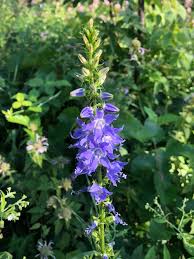
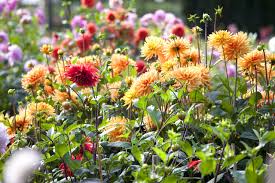
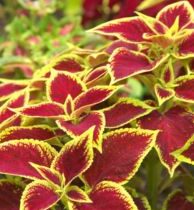
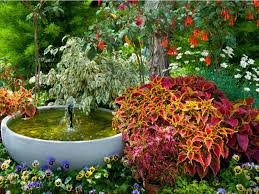
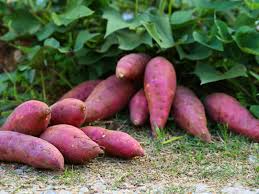
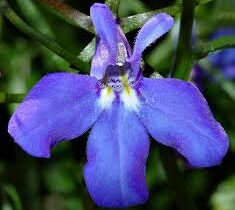
Leave a Reply
View Comments